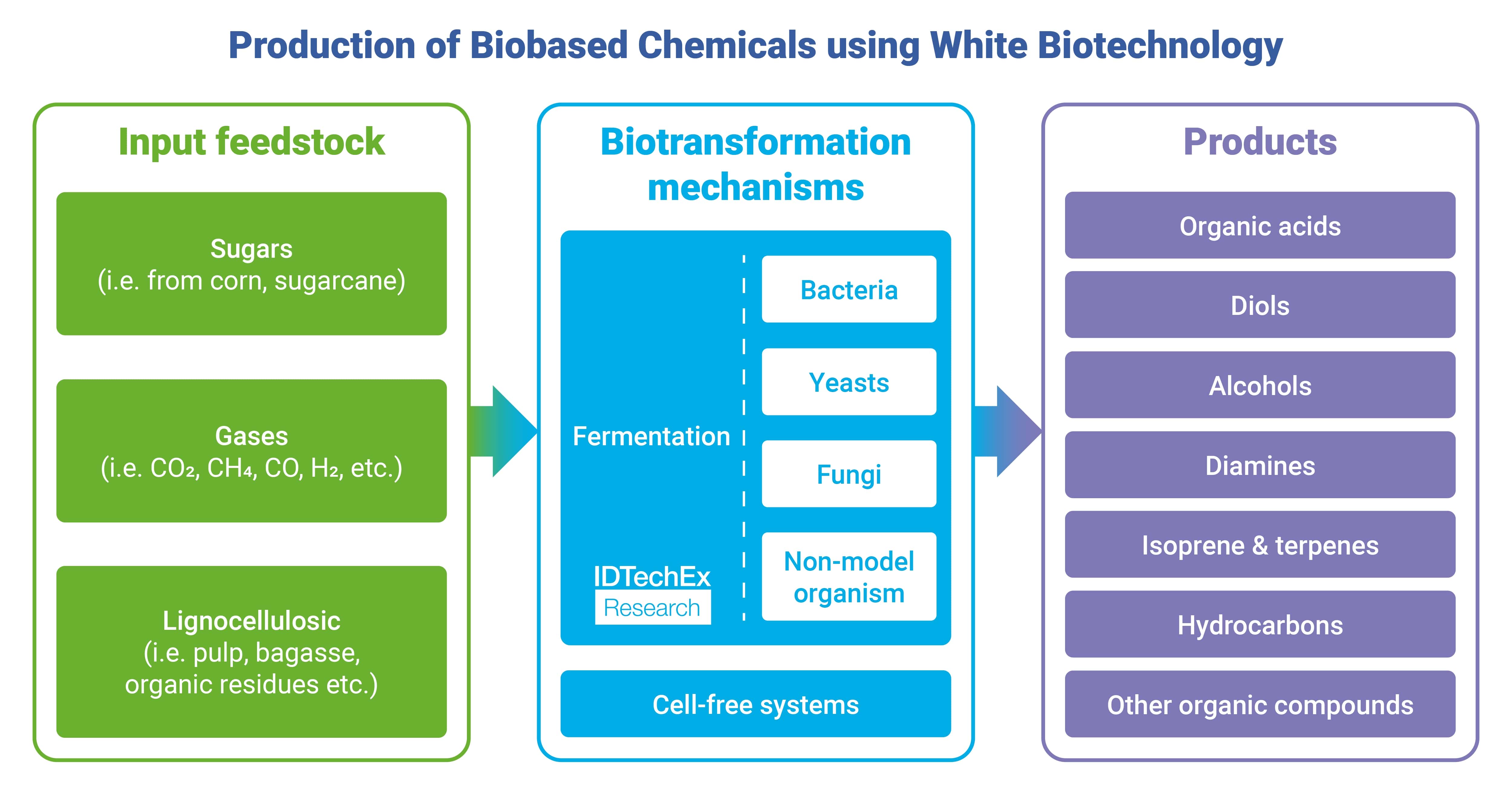The advancement of biotechnology is critical to expanding both the bioeconomy, where society uses renewable biological resources to create biobased products and the circular economy. Of the numerous colors of the biotechnology spectrum, in which different colors refer to different applications for biotechnology, white biotechnology stands out as a key technology enabler for the bioeconomy by advancing the industrial production of biobased products through biological systems.
In their report, “White Biotechnology 2024-2034”, IDTechEx provides an independent analysis of the status of white biotechnology, looking critically at technology innovations and historical, current, and future projects to provide an objective assessment of white biotechnology’s future.
What Is White Biotechnology, and Why Does It Matter?
White biotechnology, sometimes called industrial biomanufacturing, is the industrial production and processing of chemicals, materials, and energy using living cell factories, like bacteria and yeast. White biotechnology represents a more sustainable alternative to petroleum-based chemical production: one that not only decreases society’s reliance on fossil fuels but also uses less energy, generates less waste, and potentially creates more environmentally friendly products.
White biotechnology is not particularly new; for example, engineered enzymes for detergents have been produced via white biotechnology since the 1980s. That begs the question: Why is white technology so interesting now?
With improvements in biotechnology tools and processes comes the ability to produce numerous important products, from commodity chemicals to high-performance materials, through white biotechnology. One main technology driver is synthetic biology – the artificial design and engineering of biological systems and living organisms for the purpose of improving applications for industry or research. Synthetic biology is highly important to industrial biomanufacturing, considering its tools and techniques (i.e., gene editing and strain engineering) that allow white biotechnology to push into new applications.
But synthetic biology is by no means the only technology driver for white biotechnology. IDTechEx’s exploration of white biotechnology identified other technology advances enabling the field, such as novel biocatalysts, alternative feedstocks, and cell-free systems.
With each technology innovation comes the ability for white biotechnology to better its reach into compelling applications – the chemicals, precursors, additives, and materials produced by the fermentation of engineered cell factories. The range of molecules and compounds that can be biomanufactured is incredibly diverse, with use cases in everything from lubricants to leather, textiles to packaging, adhesives to additives, etc. And this list increases with every technological advancement being developed by established and emerging players. IDTechEx has considered well over 100 companies pursuing white biotechnology efforts, ranging from multinational material and chemical conglomerates to nascent startups.
The technology innovations of white biotechnology are just one component of the overall market dynamics that are shaping industrial biomanufacturing. There are numerous factors to be evaluated to determine the economic viability of certain white biotechnology projects, from internal factors such as process yield, ease of scale, and biocatalyst choice to external factors such as government regulations, crude oil prices, and the green premium. The white biotechnology market needs to be analyzed from these perspectives to offer an understanding of the industry’s future trajectory and its role in advancing the global bioeconomy.

Production of biobased chemicals using white biotechnology. Source: IDTechEx
IDTechEx White Biotechnology Market Forecast
IDTechEx’s new “White Biotechnology 2024-2034” report carefully explores the white biotechnology landscape. It includes evaluations of over 35 biomanufactured molecules, looking at critical aspects like their technology readiness level, key technical challenges, commercial players, applications, and more. IDTechEx also provides market forecasts that carefully segments the market by ten major biomanufactured molecules based on global production capacity, which are extrapolated in the 10-year forecast to explore each segments’ current capacity and potential for growth. Additionally, IDTechEx provides a comprehensive examination of critical application areas, a discussion of technology trends, and in-depth market and economic analysis.
For further information on this market, including discussion on over 100 players, analysis of numerous biomanufacturing processes, and granular 10-year market forecasts, see the market report “White Biotechnology 2024-2034”.
For more information on this report, including downloadable sample pages, please visit www.IDTechEx.com/WhiteBiotech.
For the full portfolio of sustainability research available from IDTechEx, please visit www.IDTechEx.com/Research.
About IDTechEx
IDTechEx guides your strategic business decisions through its Research, Subscription and Consultancy products, helping you profit from emerging technologies. For more information, contact [email protected] or visit www.IDTechEx.com.





